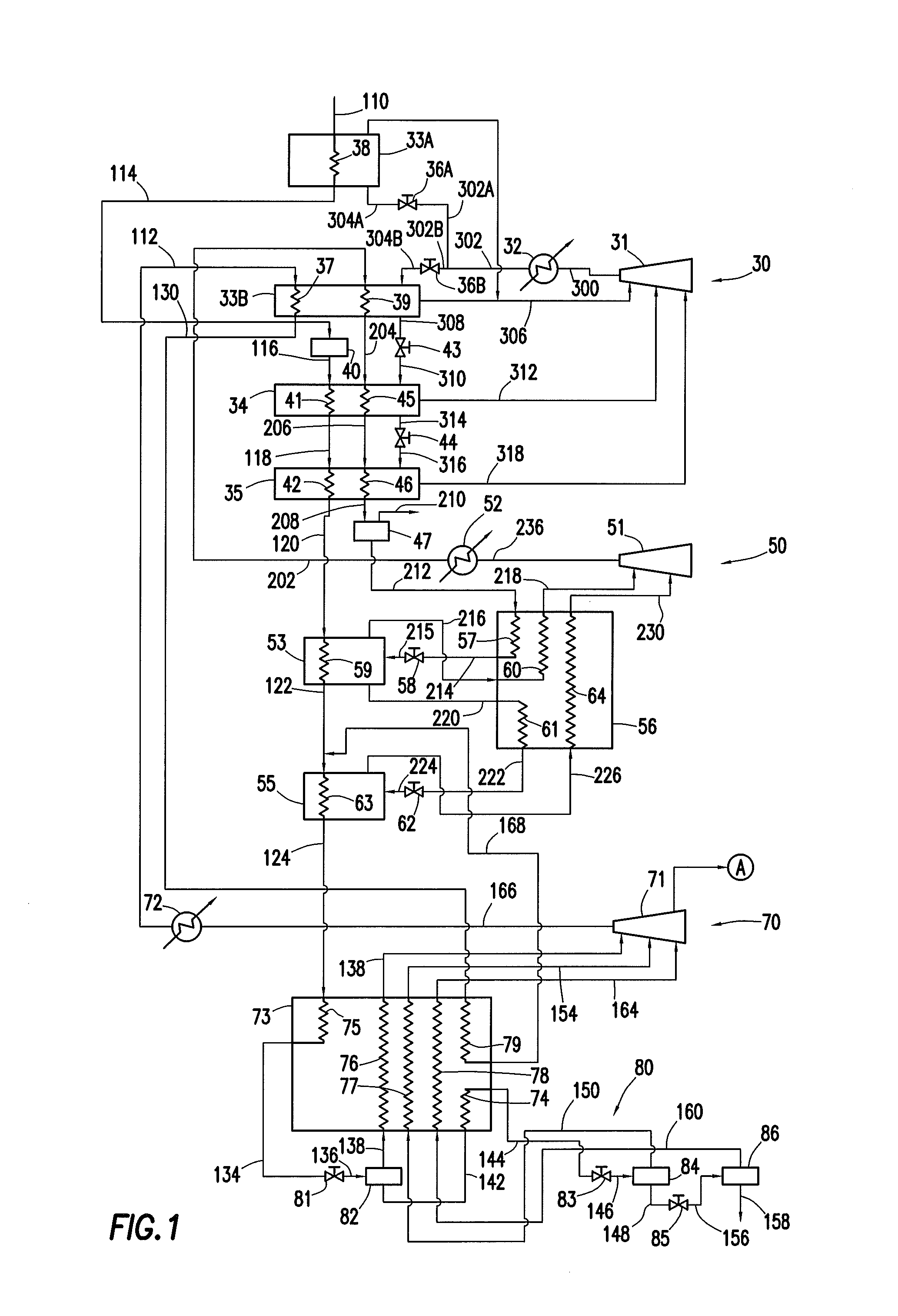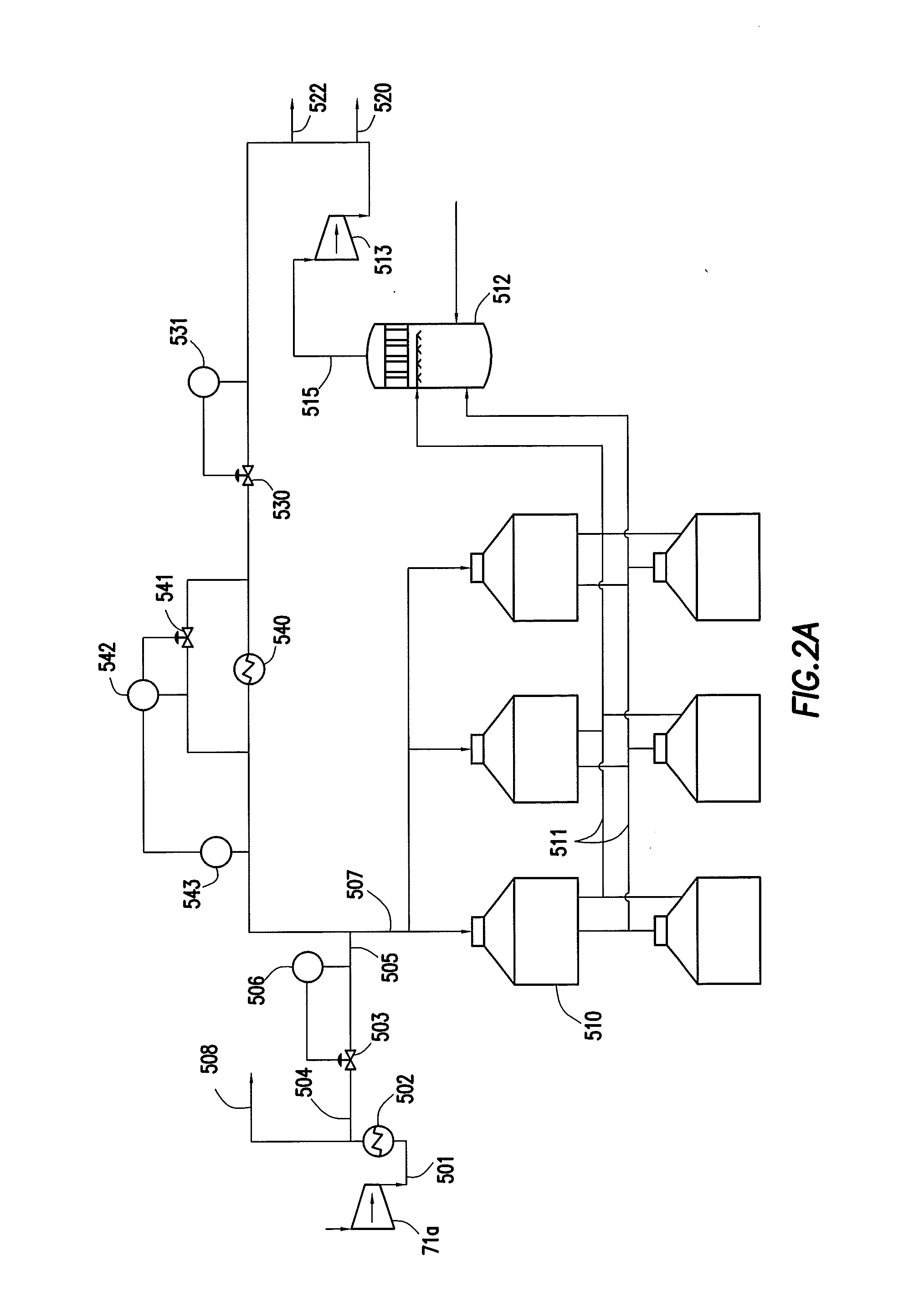Integrated cascade process for vaporization and recovery of residual LNG in a floating tank application
a floating tank and cascade technology, applied in the field of liquefaction of natural gas, can solve the problems of additional technical challenges in removing residual lng from flng lng storage tanks, and conventional methods of lng do not recover vaporized lng
- Summary
- Abstract
- Description
- Claims
- Application Information
AI Technical Summary
Benefits of technology
Problems solved by technology
Method used
Image
Examples
example 1
[0046]Dynamic simulations were developed to model the time required to complete a heating vaporization cycle in both open mode and closed mode operations. The simulations were based on a design that includes 4 BOG compressors producing around 38-40 tons per hour depending on exact composition of BOG. The BOG compressor discharge is between about −110° C. to −125° C. in normal operation.
[0047]During open mode operation, the quench system was designed for a 60 T / hr load at −80° C. Under these conditions, the maximum BOG return gas temperature was −145° C. at 60 T / hr at the BOG compressor suction. The time required to heat a tank from −160 to +5° C. was estimated to be less than 24 hours including the time to evaporate 1 meter of residual LNG in a single 2500 m3 tank. The heating was done simultaneously with a separate single operating tank with a BOG return rate of 4.3 T / hr. This heating process is required prior to a 20 hour cycle that brings inert gas followed by air. After this tim...
PUM
 Login to View More
Login to View More Abstract
Description
Claims
Application Information
 Login to View More
Login to View More - R&D
- Intellectual Property
- Life Sciences
- Materials
- Tech Scout
- Unparalleled Data Quality
- Higher Quality Content
- 60% Fewer Hallucinations
Browse by: Latest US Patents, China's latest patents, Technical Efficacy Thesaurus, Application Domain, Technology Topic, Popular Technical Reports.
© 2025 PatSnap. All rights reserved.Legal|Privacy policy|Modern Slavery Act Transparency Statement|Sitemap|About US| Contact US: help@patsnap.com



